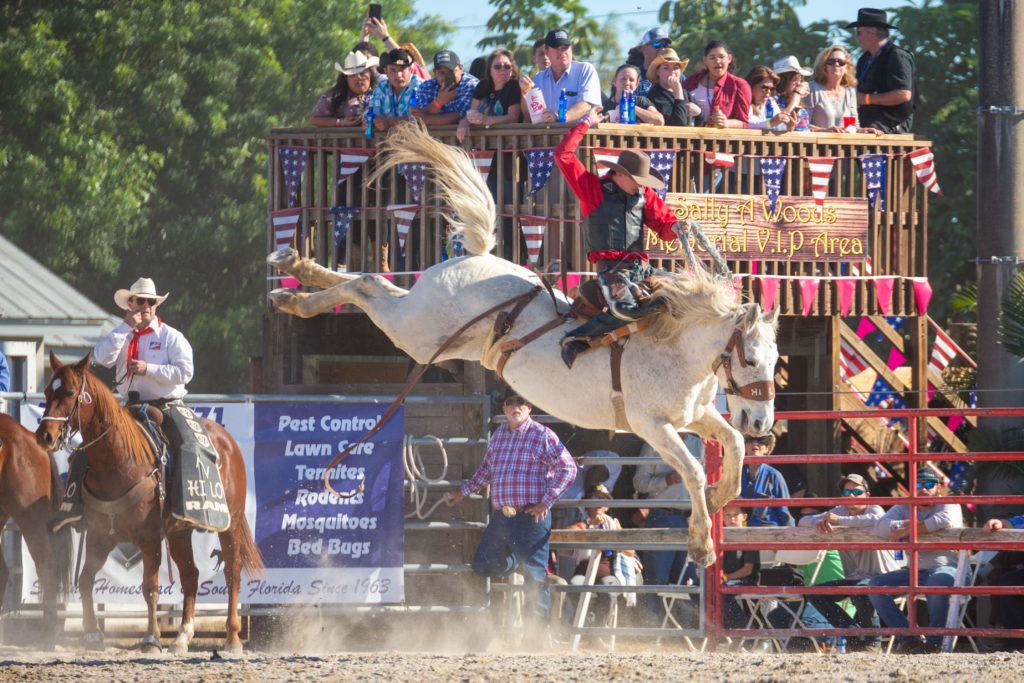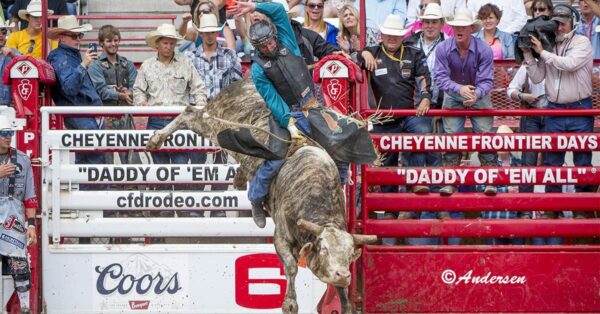There can be no question that rodeo has been in the crosshairs of animal extremist groups for years, and that they have made inroads to abolishing it in several states based on their “animal rights” agenda. They deliberately muddy the definition of animal welfare and animal rights. Animal welfare is not to be confused with animal rights.
AVMA Defines Animal Welfare vs. Animal Rights
According to the American Veterinary Medical Board (AVMA),
“Animal welfare is a human responsibility that encompasses all aspects of animal wellbeing, including proper housing, management, nutrition, disease prevention and treatment, responsible care, humane handling, and, when necessary, humane euthanasia. Animal rights is a philosophical view and personal value characterized by statements by various animal rights groups. Animal welfare and animal rights are not synonymous terms. The AVMA wholeheartedly endorses and adopts promotion of animal welfare as official policy; however, the AVMA cannot endorse the philosophical views and personal values of animal rights advocate when they are incompatible with the responsible use of animals for human purposes, such as food, fiber, and research conducted for the benefit of both humans and animals.”
We at Western Justice want to share animal welfare practices from many western disciplines and will have a series of articles dedicated to each discipline and sport.
Rodeo Roughstock Events
Roughstock events in rodeo refer to the “bucking” sports- saddle bronc riding, bareback riding, and bull riding. Those who follow rodeo know that the health and well-being of the horses and bulls are equally as important as the health of the cowboys who ride them. Yet animal extremist groups have been working for years to produce a false narrative to achieve their stated goal: to sever the animal/human bond.
The Professional Bull Riders Association (PBR) and Professional Rodeo Cowboys Association (PRCA) each have developed strict standards to protect the livestock involved in these events. Rules include equipment and how it is to be used, that a veterinarian is on-site during the competition, proper care and handling, and in the rare case of an injury, how the animal is to be treated. The PRCA has 70 rules in place to ensure proper care and treatment of rodeo livestock. This article only covers those involved with the rough stock events. Below is a partial listing of the rules.
- A veterinarian must be on-site at all PRCA-sanctioned rodeos
- All animals are inspected and evaluated for illness, weight, eyesight, and injury before the rodeo and no animals that are sore, lame, sick, or injured are allowed to participate
- Acceptable spurs must be dull and loose for saddle bronc and bareback riding; they must be dull and loosely locked for bull riding events (to help the rider hold on)
- Standard electric prods may be used only when necessary and may only touch the animal on the hip or shoulder
- Flank straps for horses are fleece or Neoprene lined and those for bulls are made of soft cotton rope and may be lined with fleece or Neoprene
- The use of prods and similar devices is prohibited in the riding events unless an animal is stalled in the chute.
- Rodeos must have a conveyance available to humanely transport any injured animal
- Any PRCA member caught using unnecessary roughness or mistreating an animal may be immediately fined, suspended, or expelled depending on the severity. This holds true whether it is in the competitive arena or elsewhere on the rodeo grounds

The Facts About Roughstock Events
The horses and bulls used for the rough stock events are brought to the different venues by stock contractors in specially designed trailers. These contractors breed, raise, and purchase top quality animals to provide the best bucking stock possible. The levels of love, knowledge, and respect contractors have for their animals are second to none. The contractors know that a sickly, weak, or ill-treated animal will not perform to its potential, so they spend the money required to provide top of the line care.

Bucking animals aren’t “made”, as PRCA stock contractor Skip Beeler explains. “You can teach them to handle, load into the truck, stand in the chutes so they don’t hurt themselves, but nobody can train a horse or bull to buck. They have got to have it in them! I’d say it’s about 75% breeding, 10% luck, and 15% hard work to teach them the skills they need so you can handle them.” Veterinarians agree that bucking animals must be well-treated and well-suited for the bucking events to become top-level bucking stock.
A Few Myths About Bucking Animals from Animal Extremist groups
Myth #1- Bucking stock are subject to abusive practices such as tight flank straps, spurs, electric prods, and are forced to perform.
Flank straps work as a signal for the animal to buck, much like a vest put on a service dog, signals it is time to work. The fleece or Neoprene lined flank strap is around the “waist” of the horse or bull and is no tighter than a belt would be tightened on a person. It is NOT placed around the genitalia (point of fact, many of the best-bucking horses are mares). Placing a flank strap too tightly, or around genitalia would actually cause an animal to not want to move….at all.

The horses and bulls are trained to accept the flank strap and understand that when it’s placed on them, it’s time to buck. As the PRCA website states:
“Bucking animals are born, not made, and a flank strap cannot magically turn a placid animal into a championship bucker. When placed on an animal naturally inclined to buck, the flank strap simply augments the bucking action, encouraging a bucking bronc or bull to kick high with its back feet.”
Myth #2- Spurs cut the hide of the horses and bulls.
In rough stock events, spurs are required to be dull. In bareback and saddle bronc events, the rowel, the part that turns, is required to be loose so that the spur rolls on the horse’s hide. In the bull riding events, the spur also must be dull, but the rowel can be loosely locked. This helps the bull rider’s spur to grip the bull’s loose hide and stay on the bull for the required 8 seconds. It’s important to note that human skin is about 1-2mm thick, while a horse’s skin is 5mm and a bull’s 7mm thick, so there is no way the spurs can cut the hide of either the horse or the bull.

Myth #3- Cattle prods cause electrical burns
Cattle prods were developed by the cattle industry to safely move cattle. It is considered by veterinarians and cattlemen to be one of the most humane methods to move cattle on the ranch, or in veterinary settings. Cattle prods run on D cell batteries and produce volts, not amperage. It is the amperage that causes burns. Voltage gives the “shock” sensation, a tingly effect. In fact, physical therapists use battery-powered transcutaneous electrical nerve stimulation (or TENS unit) to help relieve pain and speed up healing.

Myth #4- Rodeo livestock travel constantly in tight, unventilated, double-decker trailers and are fed and watered sporadically.
The welfare of these animals is a top priority and even their travel arrangements are regulated. The animals travel no more than 10 hours a day and usually have a 12-14-hour layover to rest according to the Professional Bull Riders rules. The trailers are specially designed with plenty of space and they stand in 6-10” of shavings during transport.

Myth #5- Rodeo animals are worked hard and are seen as being expendable and have short lives. After a rodeo, they are gathered up and sent to the slaughterhouse.
This myth will raise the hackles of any horse or cattle person as the truth is quite the opposite. Championship bucking stock is EXPENSIVE. In fact, many bulls are worth $10,ooo (the low end) to over $500,000. The animal’s value increases when they produce quality bucking offspring. The top bull, Bushwacker, had an offer made to his owner for $1,000,000.00; and the champion bucking horse Nightjacket was sold for $200,000. Clearly, stock this valuable is going to be well cared for. In fact, most stock contractors will go hungry before allowing their bulls and horses to not receive their care first. Many bulls and horses also receive chiropractic care as well as acupuncture.

Bucking horses and bulls perform during their prime years and are usually retired to live out their lives. Many go on to sire the next generations of championship bucking animals. Stock contractor Harry Vold said,
“We like to keep our horses around forever. It’s like an old folks’ home, and it can get costly, but they’ve earned their keep.”
As far as working hard, a qualified ride is 8 seconds long, so in a year’s time the total time that bucking animal performs is literally only minutes. In a 2- or 3-day competition, that horse or bull may buck twice, no more than that. When it’s time to retire, the animals go on to live at the stock contractors ranches, or in the case of Ty Murray, legendary rodeo contestant in all three rough stock events, he purchased many high caliber bucking horses he’d ridden for the sole reason of wanting to be the one to care for them in retirement. Those that have lived their lives are buried on his ranch with custom made grave markers.
Rodeo Truths
Rodeo animals are well taken care of, from the rough stock to the roping cattle. All equine disciplines must unite and uphold each other’s groups because together we are stronger than the animal extremists. We need to present a united front to fight against legislation that is obviously backed by animal extremist groups and to promote animal welfare as being the goal for all animals. Otherwise, we will lose our ability to have and own animals, which is the end goal of the animal extremists. We at Western Justice will continue to keep our members abreast of any legislation we come across, and to educate the general public about the care our animals receive.
Last Updated on 08/28/2020 by C.J. Garland
CLN Community Sponsor














